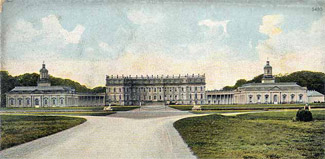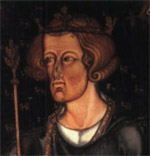WordPress database error: [Got error 28 from storage engine]
SELECT t.*, tt.*, tr.object_id FROM wp_terms AS t INNER JOIN wp_term_taxonomy AS tt ON tt.term_id = t.term_id INNER JOIN wp_term_relationships AS tr ON tr.term_taxonomy_id = tt.term_taxonomy_id WHERE tt.taxonomy IN ('category', 'post_tag', 'post_format') AND tr.object_id IN (19718) ORDER BY t.name ASC
Clan Hope History
Hope is probably a native Scots name deriving from ‘Hop’. In middle English this means ‘small valley’. Another suggestion is that it derives from ‘oublon’, which is French for ‘hop’ and could be from the family de H’oublons of Picardy. This borders family, whatever the origin of their name it was among those added to the Ragman Roll, The oath of fealty given to Edward I in 1296.
The principle line is traced. back to John de Hope, who reportedly travelled from France with Magdalen, first wife of James V. John settled in Edinburgh and became commissioner for Edinburgh to the first General Assembly of the Church of Scotland in 1560.
Sir Thomas Hope, John de Hope’s grandson was Lord Advocate, appointed by Charles I. They became ‘Hope of Craighall’ after aquiring the estates of the same name in the parish of Ceres in Fife. His contribution to the Scottish legal profession was immense and his works are still referred to by Scottish lawyers today. He saw 2 sons raised to the Supreme Court Bench and was created of Baron of Nova Scotia in 1638. He also drafted the National Covenant. After his death in 1646 his eldest son took the title ‘Lord Craighall’. Lord Craighall became a trusted advisor to Charles II, his advice proved particularly in his dealings with Cromwell.
In 1792 the Craighall estates were sold on by the sixth Baronet to the Earl of Hopetoun, Sir Thomas Hope. The eighth Baronet is best known for turning former plague pits in Edinburgh to the ‘Meadows’ park.
The sixteenth Baronet served in both the Boer War and the Great War and was MP for Midlothian between 1912 and 1918.
The younger son of the great Sir Thomas Hope founded the Hopetoun branch of the family and settled in West Lothian. His son was lost at sea when the frigate Gloucester sank. There is a story that he died saving the Duke of York, James VII. Sir Thomas’ grandson was a young member of parliament for Linlithgow, rising rapidly to the Privy Council and by 1703 was made a peer; Earl of Hopetoun, Viscount Aithrie and Lord Hope. Around this time the magnificent Hopetoun House, one of William Adam’s best known houses was built for the family.

Hopetoun House, South Queensferry. Home of the Marquess of Linlithgow, member of the Hopetoun branch of Clan Hope.
The Earl of Hopetoun’s estates grew rapidly in the 18th century with most of West Lothian, and parts of East Lothian and Lanarkshire.
The fourth Earl, who had a notable military career, particulary during the Peninsular War worked with Sir Walter Scott in welcoming George IV during his visit to Scotland in 1822. Hopetoun house being used to host a lavish reception for the Monarch.
The name John Aidrian Hope is well remembered on the other side of the world; the seventh Earl was first Governor General to the Australian Commonwealth in 1900. Two years later he was made Marquess of Linlithgow. The second Marquess was Viceroy of India from 1936 to 1943. The family still live at Hopetoun house.
The Chiefly line of the Hope family survive through the Baronets of Craighall.
Clan Hope Posts







